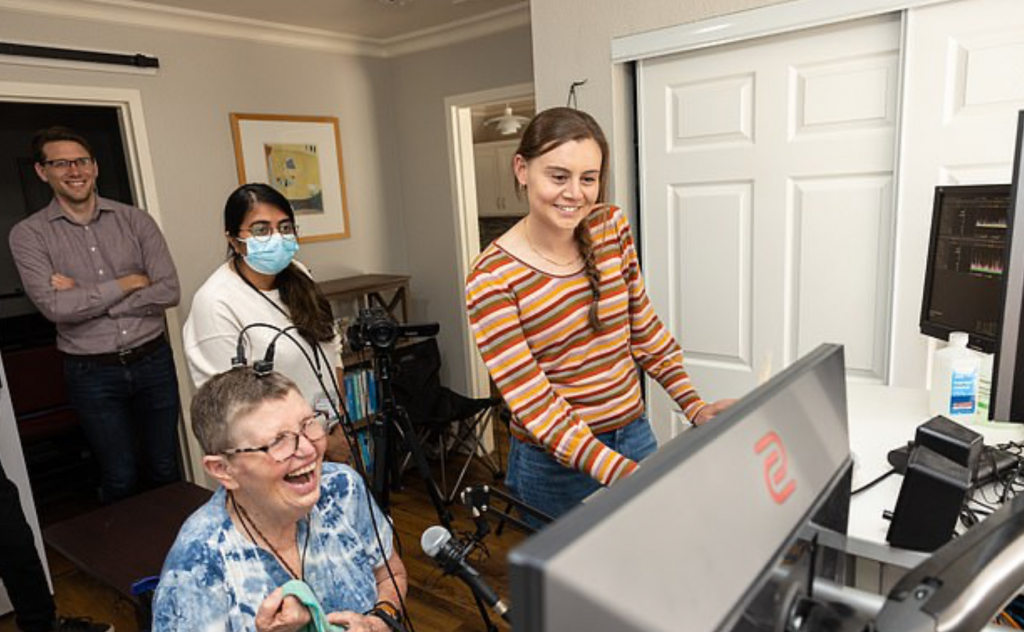In a groundbreaking development, a woman who had been silenced by a disorder for over a decade has found her voice once again. After enduring 11 years of a condition that had claimed the lives of renowned figures like Stephen Hawking, Pat Bennett, 68, has defied her affliction through cutting-edge brain chips.
Amyotrophic lateral sclerosis (ALS), a neurological disorder that affects the motor neurons controlling voluntary muscle movement, had tragically stripped Pat Bennett of her ability to engage in activities she once cherished, such as horseback riding and jogging. Similarly to the illness that claimed the lives of Stephen Hawking and Bryan Randall, partner of Sandra Bullock, ALS rendered Bennett unable to speak, diminishing her connection to the world around her.
Nonetheless, a glimmer of hope emerged from a clinical trial conducted at Stanford University. This revolutionary endeavor involved the insertion of four minuscule sensors, comparable in size to baby aspirins, into Bennett’s brain. The outcome was astounding: She regained the ability to communicate her thoughts at an unprecedented rate of 62 words per minute, facilitated by a direct interface between her mind and a computer monitor.
One of the trailblazers in the field, Professor Philip Sabes from the University of California and a co-founder of Elon Musk’s Neuralink hailed this study as a “big breakthrough.” He emphasized that the level of performance attained by Bennett’s brain-chip interface was in high demand among individuals who had lost their ability to speak. The potential of this technology is vast, as it could provide an essential lifeline to nonverbal people, enabling them to remain connected to the broader world.
Bennett’s journey toward rediscovering her voice was an intensive process. Throughout 26 sessions, she collaborated with an AI algorithm to train it to decipher the neural signals corresponding to 39 distinct phonemes—essential speech sounds used in English. Through painstaking effort, Bennett helped the algorithm learn to accurately interpret her intentions, allowing her to express herself more effectively. The sentences used for training were gleaned from phone conversations dating back to the 1990s, collected by a calculator-manufacturing company.
In her correspondence, Bennett expressed enthusiasm for the potential of this technology to transform the lives of those who, like her, had been silenced by their conditions. She acknowledged that while initial results showcased the concept’s feasibility, further technological advancements would make it accessible to more individuals. Her unique experience with ALS, which initially manifested as speech difficulties rather than the more typical limb impairments, shed light on the diverse ways the disease can manifest.
Bennett’s triumphant journey from silence to communication is a beacon of hope for countless individuals grappling with speech-affecting conditions. Through the fusion of neural science and advanced algorithms, this remarkable breakthrough rekindles lost connections. It paves the way for a future where the boundaries between human cognition and technology continue to blur.

